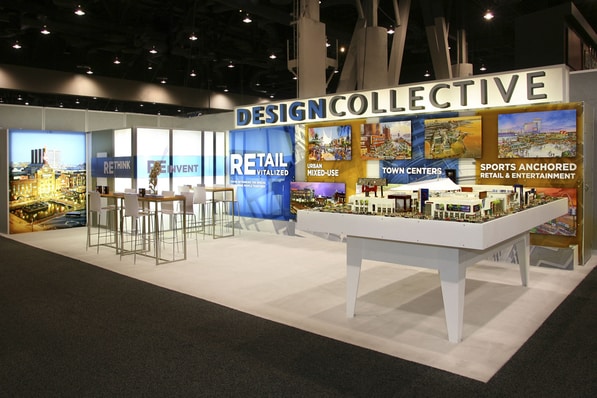By mastering trade show budgeting secrets, you can ensure your booth captures attention without breaking the bank.
Trade shows offer a unique opportunity to showcase your brand, connect with potential clients, and discover new opportunities for growth. But without a clear and strategic budget, even the best-planned event can quickly spiral into a financial burden.
Budgeting for Trade shows and events offer benefits like:
- Improves ROI: A well-planned event budget ensures that every dollar spent contributes to measurable outcomes, maximizing return on investment (ROI).
- Optimizes resource allocation: With a clear budget, businesses can allocate resources efficiently across key areas like booth design, travel, staffing, marketing, and promotional materials.
- Prevents overspending: Trade shows can be costly, and without a proper budget, companies may overspend on unnecessary items, leading to financial strain.
- Supports strategic planning: Budgeting aligns trade show goals with broader business objectives, such as lead generation, brand awareness, and sales conversions, ensuring that every aspect of the event supports the company’s strategic direction.
- Enhances event success: By investing in the right areas, businesses can enhance the attendee experience, improve engagement, increase lead generation, and boost their overall impact.

The following eight trade show budgeting secrets can help you make every dollar count while delivering a memorable experience that drives business growth:
1. Get a head start.
It’s never a good idea to begin your budget planning at the last minute because you will likely make errors or overlook important strategic elements. Starting early gives you ample time to consider your goals, research trade shows, negotiate booth prices, and secure the best deals on travel and accommodations.
2. Determine your event goals.
Clearly define your trade show objectives for each show you participate in. Are you showcasing a new product? Looking to create brand awareness? Strengthening customer relationships? Having specific goals will help you allocate your budget accordingly.
3. Allocate with discernment.
Once the goals are defined, apportion your budget based on them. For instance, if lead generation is your primary objective, you’ll want to allocate a significant portion of your budget to marketing and promotional activities to attract potential customers to your booth.
4. Consider a rental trade show booth.
If you only have one major event each year or need a booth with a specific size or design to make a bigger impact, renting a trade show booth might be the way to go. Whether you need a larger display to make a splash or a smaller one because you already own a larger setup, rentals offer a cost-effective solution. Renting allows you to customize your booth for the event without the high upfront cost of purchasing a new exhibit.
5. Explore sponsorship opportunities.
Sponsorship packages are a great way to boost your company’s visibility and gain valuable perks, making them a smart investment for many businesses. Take the time to evaluate the sponsorship opportunities available and choose those that align with your event goals and help you stand out from the competition.
6. Leverage partnerships.
Look for opportunities to secure partnerships or in-kind contributions that can reduce costs. For example, you might find a sponsor willing to cover promotional materials in exchange for visibility at your booth. Efforts like these can stretch your budget and free up funds for other essential areas.
7. Keep tabs on expenses.
Throughout the trade show planning process, monitor your expenses closely. Keep track of all costs, including booth fees, display costs (including installation and dismantling), travel expenses, staff wages, and marketing materials. Keeping a running total will help you adhere to the established budget.
8. Plan for contingencies.
Prepare for unexpected expenses by creating a contingency fund in your budget. This buffer can be a lifesaver if unforeseen challenges or surprise setbacks crop up, as they often do.
The trade show budgeting secrets outlined above can help you stay organized, maximize your resources, and ensure you reap the best possible return on investment. By strategically planning and making informed decisions, you’ll stay within budget and set your business up for success.
The trade show budgeting secrets outlined above can help you stay organized, maximize your resources, and ensure you reap the best possible return on investment. By strategically planning and making informed decisions, you’ll stay within budget and set your business up for success.
Ready to capture attention on the exhibit floor? Turn to the experts at Adler Display! From innovative designs to skilled fabrication and more, our friendly professionals create cost-effective and enduring tradeshow displays. Contact us today to learn more.
About Adler Display: For over 85 years, Adler Display has been one of the best-kept secrets behind so many businesses looking their best. Designing and producing a wide variety of high-quality recognition displays, trade show displays, signage and exhibits, lobby and corporate interiors, and historical timelines, Adler’s expert team includes consultants, designers, project managers, and fabricators. Working from a 17,000-square-foot facility in Baltimore that includes a precision woodworking shop, Adler Display handles printing, construction, and finishing on site. Learn how to achieve your imaging goals and make your business look amazing at: www.AdlerDisplay.com.

